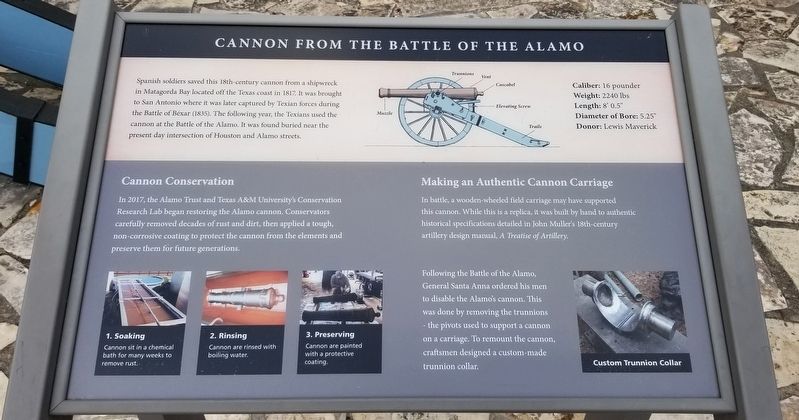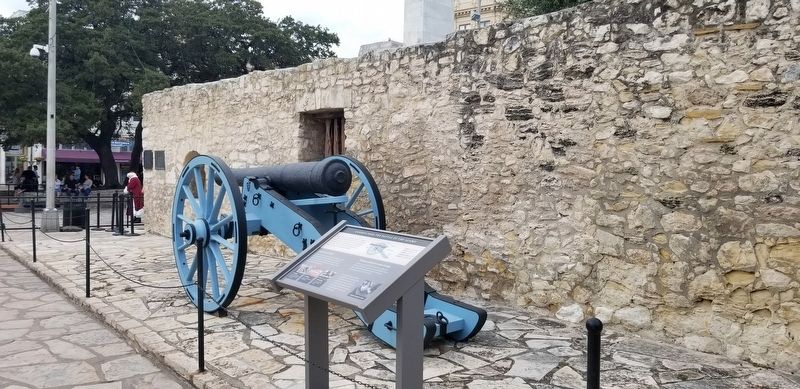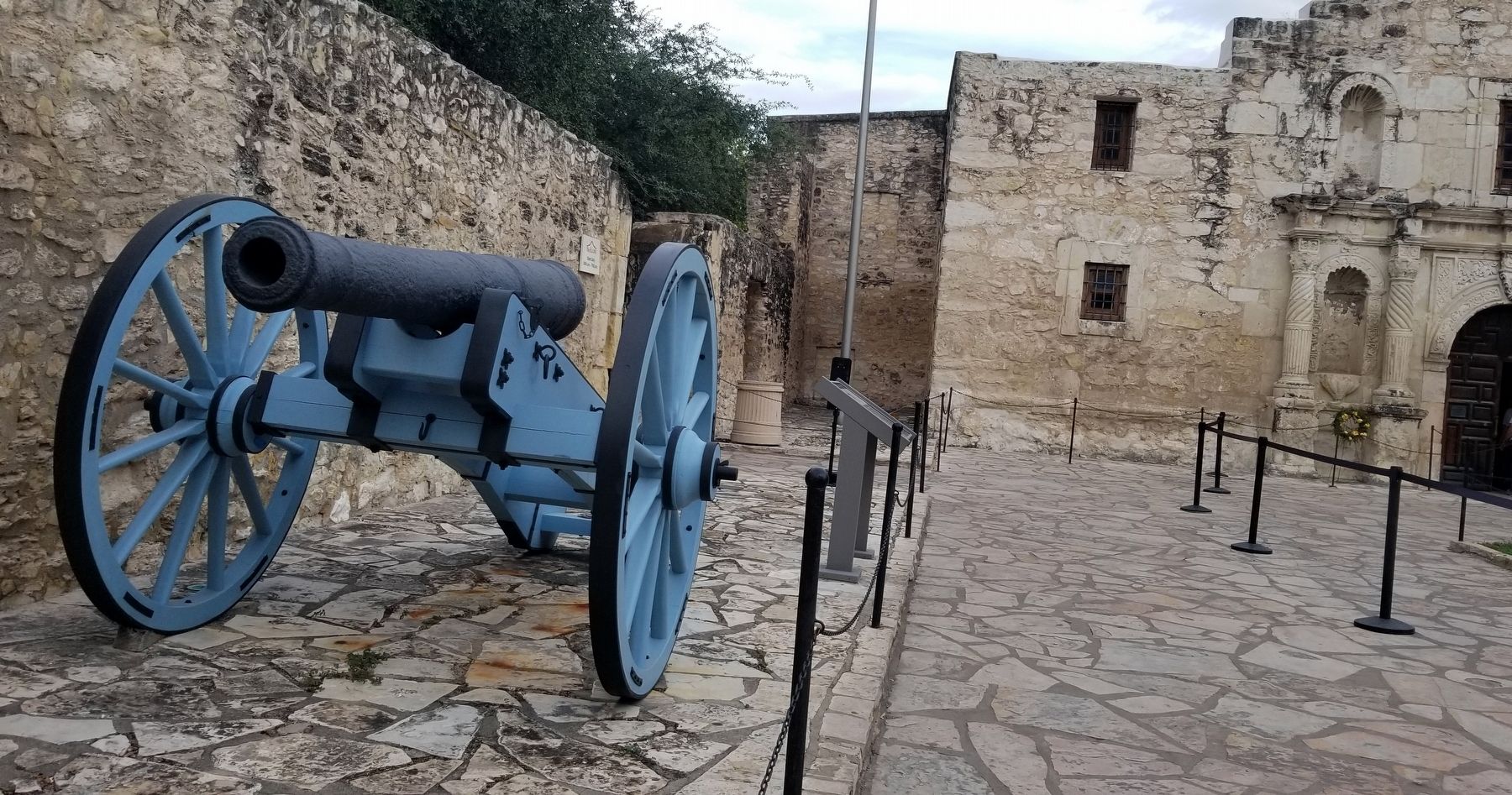Alamo Plaza in San Antonio in Bexar County, Texas — The American South (West South Central)
Cannon From the Battle of the Alamo
Cannon Conservation
In 2017, the Alamo Trust and Texas A&M University's Conservation Research Lab began restoring the Alamo cannon. Conservators carefully removed decades of rust and dirt, then applied a tough, non-corrosive coating to protect the cannon from the elements and preserve them for future generations.
1. Soaking
Cannon sit in a chemical bath for many weeks to remove rust.
2. Rinsing
Cannon are rinsed with boiling water.
3. Preserving
Cannon are painted with a protective coating.
Cannon Details
Caliber: 16 pounder
Weight: 2240 lbs
Length: 8' 0.5"
Diameter of Bore: 5.25"
Donor: Lewis Maverick
Making an Authentic Cannon Carriage
In battle, a wooden-wheeled field carriage may have supported this cannon. While this is a replica, it was built by hand to authentic historical specifications detailed in John Muller's 18th-century artillery design manual, A Treatise of Artillery.
Following the Battle of the Alamo, General Santa Anna ordered his men to disable the Alamo's cannon. This was done by removing the trunnions the pivots used to support a cannon on a carriage. To remount the cannon, craftsmen designed a custom-made trunnion collar.
Erected 2019 by The Alamo Organization.
Topics. This historical marker is listed in these topic lists: Anthropology & Archaeology • Forts and Castles • War, Texas Independence. A significant historical year for this entry is 1817.
Location. 29° 25.55′ N, 98° 29.182′ W. Marker is in San Antonio, Texas, in Bexar County. It is in Alamo Plaza. Marker can be reached from the intersection of Alamo Plaza and East Houston Street. The marker and cannon are located at the left side of the entrance to the Alamo. Touch for map. Marker is at or near this postal address: 300 Alamo Plaza, San Antonio TX 78205, United States of America. Touch for directions.
Other nearby markers. At least 8 other markers are within walking distance of this marker. Clara Driscoll, Saviour of the Alamo (a few steps from this marker); Lt. Col. William Barret Travis (a few steps from this marker); Ruins of the Habitations of the Friars and Indians (a few steps from this marker); Live Oak Tree (a few steps
from this marker); The Birthplace of Freemasonry in West Texas (a few steps from this marker); Masonic Heroes of the Alamo (a few steps from this marker); Letter From The Alamo (a few steps from this marker); Founding of the Mission and Origin of Name (a few steps from this marker). Touch for a list and map of all markers in San Antonio.
Credits. This page was last revised on February 2, 2023. It was originally submitted on December 20, 2021, by James Hulse of Medina, Texas. This page has been viewed 586 times since then and 49 times this year. Photos: 1, 2, 3. submitted on December 21, 2021, by James Hulse of Medina, Texas.


